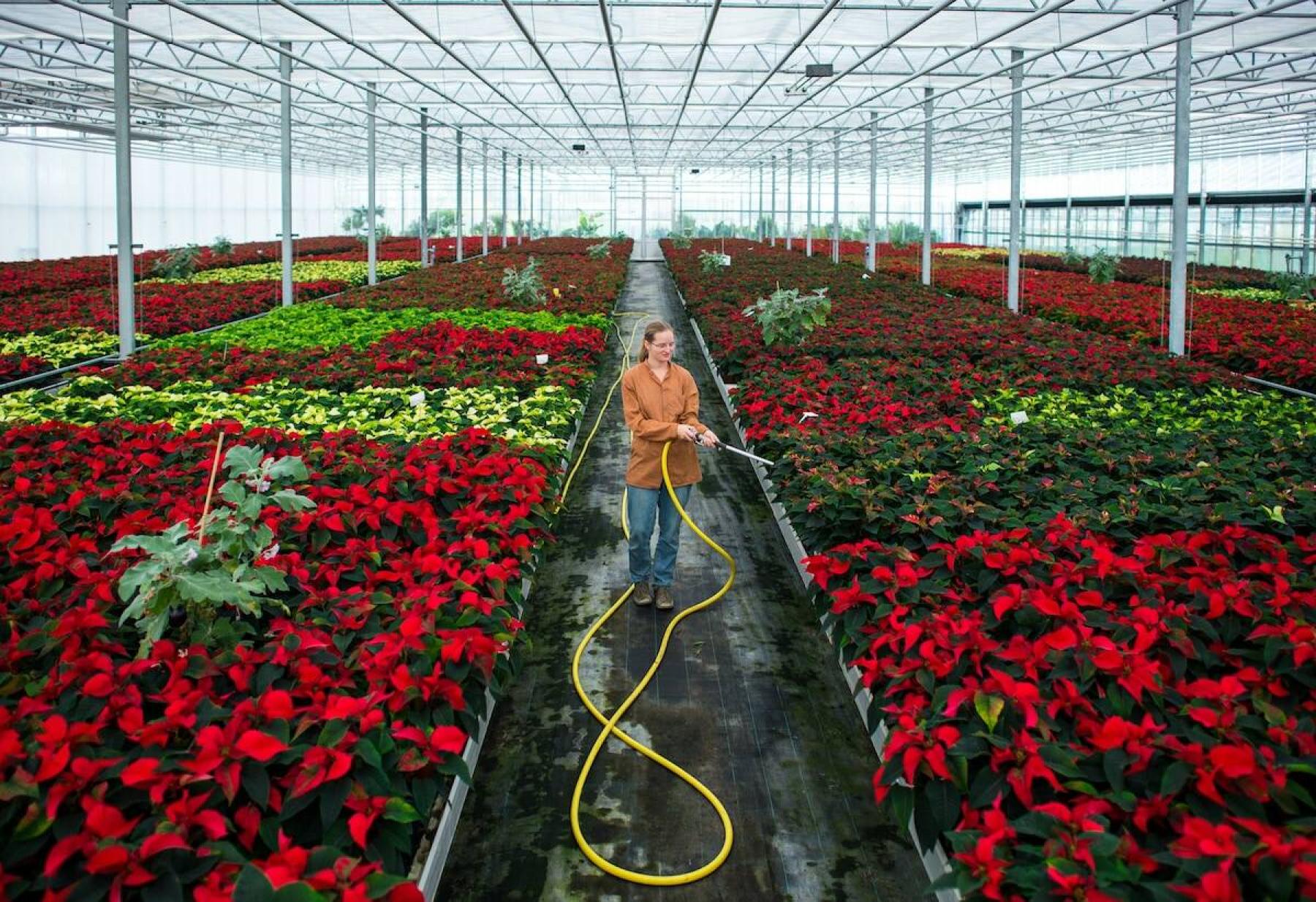Renovation & Design
Renovation & Design
Freeze leftover cookies to preserve the goodness
Question: I have a lot of leftover Christmas cookies, how can I prevent them from becoming freezer burnt in the freezer?
Answer: Homemade cookies store well for about three months, in the freezer. Layer the cooled cookies between sheets of parchment paper in a sealable container. Lay a sheet of plastic or foil over the top layer before closing the lid.
Question: I moved into an old home, and the concrete driveway is plastered with old stains. Is concrete cleaner an effective solution in bringing the driveway back to life? Edward
Answer: Concrete cleaner or degreaser is especially effective for porous concrete; here are a few alternatives and tips. The fresher the stains, the easier they are to remove. For new oil stains, cover the area with cheap kitty litter or Diatomaceous earth. Leave for three hours or more and sweep. For older stains, cover the area with degreaser and scrub with a stiff brush, making sure that all stains are covered. Another option is to pour hot water onto the concrete and scrub with dish soap. Leave for 10 mins. do not allow dish soap to sit on concrete for an extended period. Scrub with a stiff brush and rinse.
Muriatic acid is a strong option. Apply the acid following the manufacturer’s directions, and let it soak for several seconds. Keep in mind that muriatic acid is a very dangerous product; if you use it, wear rubber or latex gloves, safety goggles and protective clothing, and never wash it down storm drains. Test all solutions on an inconspicuous area first.
Question: How should I clean a felted tea cozy? How can I remove tea stains on a wooden trivet? Bonnie
Answer: The safest way to clean felted fabric is to gently blot it with a damp wash cloth and dish soap. Avoid rubbing and apply light pressure. If the stains remain, place the cozy in a sink with hot water and fabric detergent. Use your hands to agitate the fabric. Air dry. If you are not comfortable wetting the fabric, consider drycleaning the cozy. To clean the tea stains on a wooden trivet, make a paste of baking soda and water. Rub the stains until the tea marks have disappeared. Rinse with water. Murphy’s Oil Soap is an alternate option.
Question: Should I dust or vacuum first? My vacuum is five years old which isn’t that old, but I don’t think it is sucking up the dirt. Kimberly
Answer: The consensus is dust first and vacuum second. This makes sense because as the dust flies up and settles, the vacuum will suck it up. Help your vacuum efficiently clean by changing the filter regularly, replacing the bag if it is more than half full and investigating to ensure that there are no obstructions in the hose.
Tips for the New Year
Sometimes when I am working at the kitchen sink, water splashes onto the window above the sink. I have found that using a coffee filter to wipe the window, cleans the window without any effort. Sharon
After purchasing fish at the store, transfer the meat to a sealable bag. Place the bag onto a bowl of ice. As the ice melts, the water stays confined in the bowl. The fish stays fresh longer and keeps from spoiling. Bernice
I had a hard time sleeping because my feet felt so dry. I would wakeup several times a night to reapply cream onto my skin. I have discovered that rubbing petroleum jelly onto my feet is the answer. My feet are soft, and I finally feel comfortable when I sleep. Michelle
Note: Every user assumes all risks of injury or damage resulting from the implementation of any suggestions in this column. Test all products on an inconspicuous area first.
Have a great suggestion or tip?
reenanerbas@outlook.com
Renovation & Design
Keeping plumbing vent clear of ice requires a plan
Question: I have been having problems with the top of my stack getting covered in snow this winter. It is six inches tall and I was going to extend it this spring. I was going to add a 12-inch piece to the existing pipe. My concern is that the pipe will freeze with ice if it is too tall. Is there a cut-off height to solve my problem? —Thanks Doug A.
Answer: Roof plumbing vent terminations being covered with ice and snow are always a potential problem in our area due to our extreme winter weather conditions. Extending the height may prevent it from becoming capped with snow, but at the expense of potential freeze-up, which would be more detrimental. Insulating it better in the attic, and/or periodic manual snow clearings are a better approach.
I have received dozens of e-mails like yours over the years and answered many in previous columns, and I would like to wish everyone a Happy New Year for 2023 and thank all readers for their continued support and outstanding submissions. A straightforward solution like your pipe extension warrants a new approach. Gluing on an extension to the short ABS vent pipe above your roof may indeed be enough to prevent the top from being covered with blown snow. That will certainly depend on the location of it on your roof. If the vent termination is near a valley, is on the leeward side of the prevailing winds, or your home is surrounded by taller houses on both sides like mine, it may still not be sufficient. If the vent is well situated, with no factors to increase the snow drifting over top, then adding another six inches or so should solve your problem. The unfortunate part about that solution is that its success may also cause a further issue which can be more problematic.
Most stacks that are too low to the roof, or poorly located as discussed above, may have the tops covered with a few centimetres of snow after heavy storms. That could potentially cause the vents to malfunction, but that is in rare cases. Even with a small amount of snow on top, the heat from the escaping sewer gasses inside the pipe should quickly melt it enough to prevent a full blockage. Even if there is a small hole in the snow capping the pipe, enough air should enter the vent for proper drainage, while also allowing escape of noxious sewer gasses from the plumbing system. If it is completely sealed, there is a risk of the melting snow freezing up on very cold days, but that is often a short-term issue.
The simple solution to your issue, as long as you don’t have the pipe completely blocked above the roofline on multiple occasions, is twofold. First, adding insulation around the stack inside the attic may help. This should prevent that portion of the vent pipe from dropping below freezing, even in the coldest weather. The extra insulation should be continuous around the entire pipe, which may help keep the escaping gasses and water vapour from freezing up and blocking the vent below the roof. If the temperature of those sewer gases is raised a few degrees in that location, it may be enough to completely melt any snow that covers the pipe top.
Secondly, and perhaps the most simplistic approach, is to climb up on your roof immediately after a heavy snowfall and clear the area with a plastic shovel. That is only an option if your vent termination is on an easily accessible portion of the roof, with a moderate pitch and low height. If you have a two-storey, or higher, home that may be out of the question. Fortunately, higher homes like those have more of a tendency to have clearer roofs than bungalows, as much of the snow blows off. Also, if you have a very steep roof, regardless of the height, it may too dangerous to attempt snow removal from above. A long snow rake designed for roofs may be another viable option in that situation.
The real risk with adding more piping above the roof is exactly what you are concerned about. The higher the vent is above the warmer attic, the colder it will be at the very top. The attic not only allows insulation of the ABS piping, it prevents cold winter winds from hitting the exterior surface. Those two factors together, more heat loss the higher it extends above the attic and colder surface temperatures, can be a double-whammy in creating a bigger problem. Any snow that does blow over the higher pipe may more easily plug it. Also, the melting snow from the warm gas emissions is more likely to freeze, especially at night when the sun is down and ambient temperatures drop. Ice buildup inside the pipe is the truly risky situation, as it may not easily melt, causing a substantial or complete blockage of the vent.
There are also several types of devices available to prevent ice blockage or help warm the vent, but their reliability is questionable. The only one that may be successful is wrapping the pipe with an electric heating cable designed for that specific purpose, but that can be costly to run, a waste of electricity, and difficult to monitor.
Your efforts to prevent your plumbing stack termination above the roof from being snow-covered may be better served by improving its insulation inside the attic and more frequent snow removal, rather than extending the length. The risk of your suggested method is trading one issue for another, with the newer one being much more problematic.
Ari Marantz is the owner of Trained Eye Home Inspection Ltd. and a Registered Home Inspector (RHI)(cahpi.ca). Questions can be emailed to the address below. Ari can be reached at 204-291-5358 or check out his website at trainedeye.ca.
trainedeye@iname.com
Renovation & Design
Call installer regarding heat pump concerns
Question: I had a new furnace and heat pump installed last spring, now that cold weather is here, the heat pump comes on regularly, but there is a lot of ice forming underneath it. This unit is installed a foot away from the house wall and is 14 inches under the bedroom window, so that when it starts the window fogs up. The ice build-up is about six inches below the bottom of the pump now. How can I keep it from building up so it doesn’t encase the bottom of the heat pump unit?
Is it possible to enclose this outside unit in a large lean-to like structure, which would not inhibit the air flow but would keep the snow from getting in, and also to sound-proof it a bit from the bedroom? Is there any kind of slanted pan that could be placed under the enclosure, in the early fall, to run the moisture off and keep it away from the house?
Alternatively, should I just shut it off for about three months of the coldest weather, as it doesn’t come on when the temperature is really low anyway? If so, is there a switch to shut it off somewhere?
Any suggestions would be appreciated,
Thank you, Audrey.
Answer: You should not be required to contact a home inspector, or other external source of knowledge, to solve an issue and learn about proper operation of your newer heating and cooling system. Call the HVAC contractor who installed the heat pump, have them come and check out the issues, find a solution, and explain to you all that you should know about your system.
Heat pumps are quite efficient heating and cooling units that resemble central air conditioners and are powered by electricity. They can provide both moderately low-cost cooling and heating, but have a limited temperature range at the low end. They have not been very popular in our area due to that concern, because a back-up heating source is required for temperatures below approximately -15 to -20. Also, the low cost of natural gas relative to electricity is still a huge factor in most homeowners’ decision for heating systems. Because of the scarcity of these units, I am not very well versed on all the pros and cons, as well as potential defects associated with heat pumps. So, asking any local home inspector for advice on this topic, unless they are also a HVAC specialist, may not yield a favourable result.
The true experts on operation of heat pumps should be HVAC technicians/contractors that have many years experience installing and maintaining them. There may be more of these specialists in rural areas, where natural gas is not readily available for heating fuel. In areas where homes are remotely situated, Manitoba Hydro electrical service should be available, but not necessarily gas.
In most situations, a heat pump is installed along with an electric furnace. The furnace should be capable of heating the home on its own and will use the blower to circulate the heat and cold generated by the heat pump, as well, through a coil situation in the ducting. If the outside temperature drops below the threshold of the heat pump, the electric elements of the furnace should automatically turn on, yielding an almost seamless transition.
The location of your heat pump may be one of the potential causes of the ice buildup and other issues. Installing either a heat pump or air conditioner condenser directly below a window is not a preferred location and is often avoided. The noise when they are operating can be annoying as well as the hot air generated when in cooling mode. There are specific limitations for clearance from various house components, but only the HVAC installer may have that knowledge. Regardless, enclosing the unit in any type of structure is not possible.
The outside of your heat pump unit should be completely unobstructed and open to the outside air for proper function. The outside coil should be kept clean and not blocked by any structure or vegetation, or it will not work properly. In the worst-case scenario, the entire system may shut down if there is sufficient blockage so that air cannot circulate correctly. Building any type of structure, temporary or otherwise, is not possible and may only increase the chances of ice and snow accumulation. The clearance from the ground sounds reasonable, but you may have to manually remove snow and some ice from the area, periodically.
Too often with newer technologies for household use, especially with smart home components, they are not designed with the average homeowner in mind. They are designed by computer and/or mechanical engineers that have a level of sophisticated knowledge way beyond most lay people. They are often relying on the HVAC community not only to properly install and set up these complex components and controls, but also to help homeowner understand how to use them. I often wonder if they fully understand all these functions, as well. If not, how can they simply explain how to use such a system or the complicated controls to an average person?
Figuring out a solution to the ice, noise, condensation, and other issues with your newly installed heat pump should not be the responsibility of a neighbour, friend, or even a home inspector. Call the HVAC contractor that put it in, in the first place, and have them evaluate the situation and explain your options and other details about how to properly operate your heat pump system.
Ari Marantz is the owner of Trained Eye Home Inspection Ltd. and a Registered Home Inspector (RHI)(cahpi.ca). Questions can be emailed to the address below. Ari can be reached at 204-291-5358 or check out his website at trainedeye.ca.
trainedeye@iname.com
Renovation & Design
Turkey tips to love those leftovers
Question: I have leftover turkey and I don’t want to waste it. Please tell me how to make homemade turkey stock like my grandma used to make. Thanks. Salome
Answer: Great question! There are hundreds of variations for making homemade stock. Here is one recipe that will yield about two quarts of stock. Into a large stock pot drop two onions, two celery sticks and two carrots, all of which have been cut in half. Add one teaspoon each of seasonings such as pepper, garlic, basil, oregano and salt plus 1 bay leaf.
Remove as much fat as possible from the bones and place turkey carcass into pot (a little meat on the bones will add to the flavour). Add enough water to cover bones. Bring to a boil and then reduce heat and let simmer for one to two hours. Strain contents through a fine colander into a proper container and leave to cool slightly. Refrigerate. Use a large spoon to skim fat off the surface.
At this point you can either make soup with the broth or freeze it. You can freeze the broth in ice-cube trays and add to soup as needed. Note: Taste the broth and add seasonings to your liking. Some people like more flavourings and salt than others.
Question: I would like to prepare my own rub for meat. Can you give me an easy recipe that I can use on pork? Blaine
Answer: Here is an easy recipe which is perfect for about 6 pounds of meat. Into a bowl combine one quarter cup sugar, 4 tbsp. black pepper, one tbsp. salt, one quarter cup paprika, 2 tsp. dry mustard and 2 tsp. cayenne pepper. Rub half of the mixture onto meat 12 hours prior to cooking. Rub on the other half right before cooking.
Question: Why do people deep fry turkeys instead of baking them. I was given a deep fryer specifically for this purpose, but I haven’t used it. Is it worth the effort? Davey
Answer: I have a friend that heads down to the U.S. every November for American Thanksgiving just because her dad deep fries the turkey. She says it is the best way to prepare turkey and nothing beats the flavour. Deep frying turkey is a Cajun tradition that produces juicy meat and crispy skin; many people agree it is out of this world.
Question: I had company and decided to barbecue chicken breast. It was horrible. Tasteless and dry are the best words to describe that embarrassing disaster. I barbecued the meat for only seven minutes on each side. Where did I go wrong? Steve
Answer: Here’s my favourite method for barbecued chicken. Begin by marinating the chicken breast for at least a few hours in Italian salad dressing with salt and pepper. While still in marinade, bake chicken in the oven at 350 degrees for 30 minutes. Next, barbecue the chicken on medium heat for about four minutes per side. Cut through the thickest part of the meat to ensure no pink remains.
Fabulous Tips of the Week:
Whenever I have stains in teacups, I simply sprinkle baking soda into the cups and wipe with a dampened non-scratching scrubby pad. — Morgan
When a recipe calls for two egg whites, I cheat the recipe by only using one egg white. Instead, I add one teaspoon of cold water to one egg white. Beat vigorously and end up with double the amount of egg white. — Jordyn
I am a retired firefighter and want people to know the dangers of burning coloured newspapers and magazines. The ink emits dangerous chemicals which can be dangerous. — Jordyn
Note: Every user assumes all risks of injury or damage resulting from the implementation of any suggestions in this column. Test all products on an inconspicuous area first.
Have a great suggestion or tip?
reenanerbas@outlook.com







